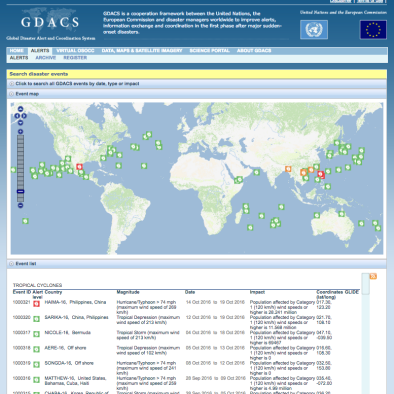Science Source
Dynamically Derived Tropical Cyclone Intensity Changes over the Western North Pacific
- Derives the basinwide tropical cyclone intensity in the WNP basin dynamically with a TC intensity model, based on the track data from the Joint Typhoon Warning Center (JTWC), the Regional Specialized Meteorological Center (RSMC) of Tokyo, and the Shanghai Typhoon Institute (STI) of the China Meteorological Administration
- Compares the dynamically derived TC intensity to the three datasets and uses this to investigate trends in TC intensity
- Also examines the associated contributions of changes in SST, vertical wind shear, and prevailing tracks
- Finds that the evolution of the basinwide TC intensity in the JTWC best-track dataset can be generally reproduced over the period 1975–2007
- Finds that dynamically derived data based on the JTWC, RSMC, and STI track datasets all show an increasing trend in the peak intensity and frequency of intense typhoons, mainly because of the combined effect of changes in SST and vertical wind shear
- Results suggest that the increasing intensity trend in the JTWC dataset is real, but that it may be overestimated
- Finds, in contrast, the TC intensity trends in the RSMC and STI intensity datasets are dynamically inconsistent
- Finds that numerical simulations also suggest that the frequency of intense typhoons is more sensitive to changes in SST and vertical wind shear than the peak and average intensities defined in previous studies
Related Content
Headline

Oct 20, 2016 | South China Morning Post
Typhoon Haima takes direct aim at Hong Kong; Signal No 8 to be raised on Friday
Headline

Oct 20, 2016 | Washington Post
Haima was the Philippines’s second typhoon in a week, and it left a trail of destruction
Headline

Oct 20, 2016 | Washington Post via Associated Press
Typhoon Haima leaves at least 7 dead in northern Philippines
Real Time Data

Oct 19, 2016 | Global Disaster Alert and Coordination System
GDACS Tropical Cyclones


